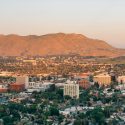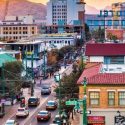The Enterprise Tech Driving Nashville’s Historic Growth
Nashville, TN, is growing fast, and that’s led to transformative projects. Here’s how a GIS system helps it stay ahead of change.

Nashville, TN, is growing fast, and that’s led to transformative projects. Here’s how a GIS system helps it stay ahead of change.

It’s a formidable challenge. Deliver human services to nearly 2.5 million people across the 7,000-square-mile expanse of Riverside County, California — and do it effectively and efficiently. From bustling urban centers to remote desert locales, the county’s needs are as varied as its geography. To meet those diverse needs, county officials recently adopted an integratedRead… Read more »

GIS mapping helps St. Louis county conduct elections more safely and efficiently.

Initiating an equity strategy in Tucson would require cross-departmental collaboration and deep public engagement. The new chief equity officer had to make a nuanced and complicated topic — equity — approachable and easy to understand. By establishing an authoritative source of data, the Office of Equity created a strategic way to understand vulnerable communities.

Ginnie Mae used GIS-based analysis to find new opportunities for lenders and investors to make loans available to underrepresented borrowers.

In Tampa, GIS technology was used to model hazardous traffic corridors. With pedestrians especially at risk of death and injury, leaders wanted to find root causes and design solutions with equity in mind.

Portland used a mobile GIS solution to address homelessness while providing information to the community via online dashboards.

Douglas County, Nebraska, used artificial intelligence (AI) and geographic information systems (GIS) to save time and money in its inventory of ADA curb ramps.

In Kansas, the Overdose Response Strategy team leveraged GIS to combat the substance misuse health crisis.

Mapping and data analysis help Raleigh, NC, respond to emergencies and plan for the future. Learn how geographic information systems can improve city services.
Notifications